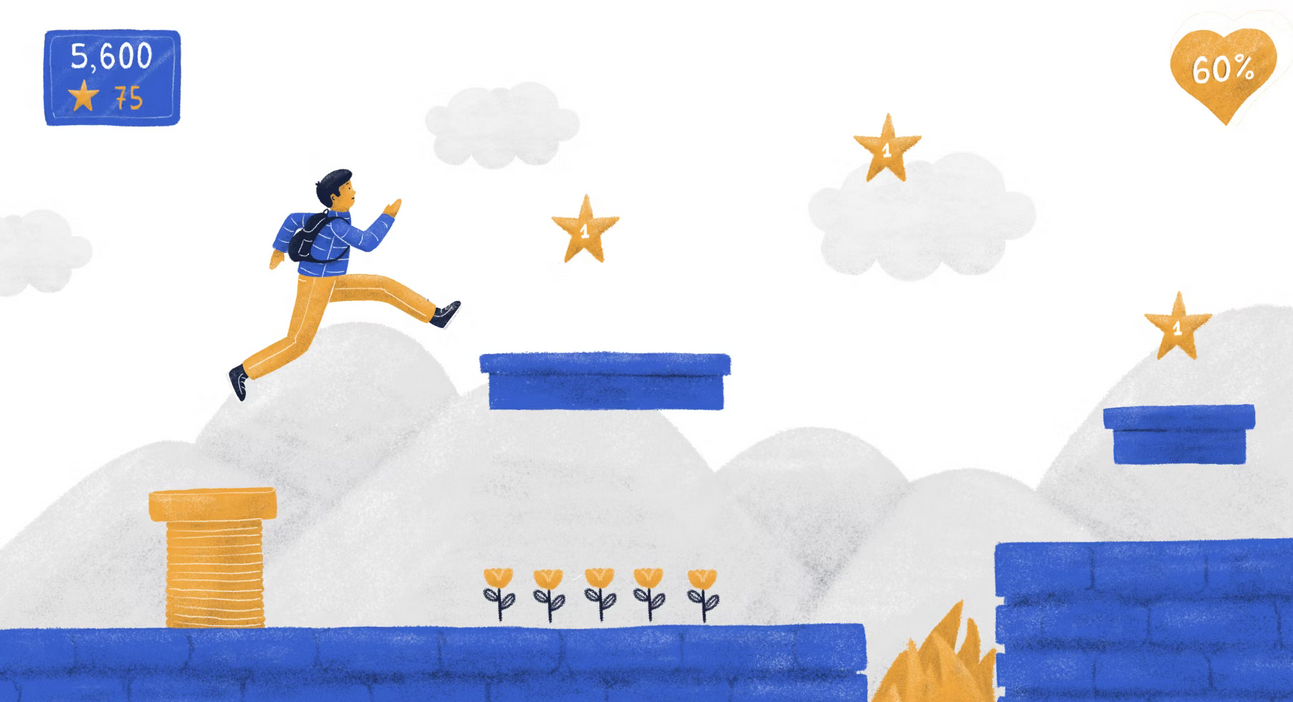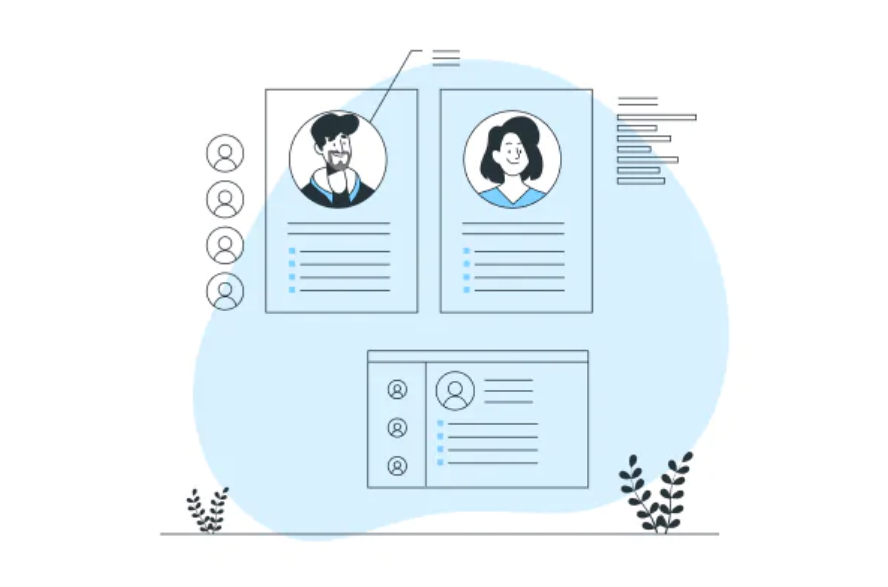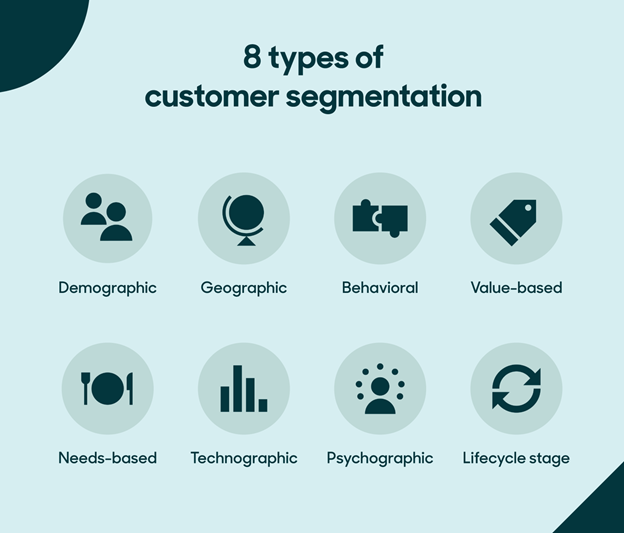The UX industry, like any other, is always evolving with the market and consumer trends. From small businesses to large enterprises, companies need to stay on top of these trends in order to boost engagement, elevate the user experience, and leverage UX design to hit their KPIs.
And that’s where gamification comes in. While gamification as a concept has been around for decades, there’s no denying that it has become a powerful tool for digital marketers, sales experts, and UX designers in recent years.
So, let’s dive right in and take a look at how you can use gamification to enhance user experience and engagement in 2023 and beyond.
What Is Gamification in UX?
Gamification is the process of integrating game mechanics into your digital products and experiences to achieve certain goals. These goals can be nearly anything, including elevating engagement and dwell time, inspiring people to complete specific tasks, and building brand loyalty.
When you look at it from a top-down point of view, leveraging gamification is one of those UX design tools and tips that you can use to complement almost every stage of your sales and marketing funnels. But of course, you need to implement it correctly.
What’s more, we can see examples of successful gamification everywhere nowadays:
- Language learning apps
- Financial apps
- Healthcare apps
- Banking apps
- Ecommerce apps
- And many more
On a side note: understanding the cost of app development is a vital aspect of incorporating gamification into your digital products. The cost to develop an app can vary significantly based on factors like complexity, features, and platform compatibility. It’s crucial to allocate a portion of your budget to ensure seamless integration of gamification elements. Keep in mind that while gamification can enhance user engagement and retention, careful budgeting is essential to maintain a profitable venture. Consider consulting experienced app developers who can provide insights into cost-effective strategies for implementing gamification while maximizing your return on investment (ROI).
With all of that in mind, let’s delve into the concrete gamification features you should consider for your online presence and digital products.
Fun Challenges Keep the User Active
Starting with one of the most widely used gamification features on the market today, a good challenge can always keep the user active and engaged. Session time is an important metric for app developers and UX designers, but also for marketers, so it’s imperative to keep challenging users in fun ways to eliminate boredom in the app.
Boredom can be a powerful deterrent for users, so challenging them can break any monotony while using the app. It’s also an important part of their journey through the funnel, while new and engaging challenges can be a great way to get the old users interested in the app again.
And that’s why according to the latest whitepaper on gamification, the challenges you present need to end with rewards and user appreciation. These challenges are not hurdles, however, and need to be lighthearted, fun, and most importantly, they need to serve a purpose.
Make sure to define the goals you want a user to achieve, and then structure a challenge that supports that goal.
This challenge can be as simple as giving them a trivia game with a timer, or a quiz that ends with a clear call-to-action (CTA) and some rewards.
Leaderboards Inspire Healthy Competition
Challenges and fun little games can all be tied into a centralized, connected leaderboard system that can help build a positive yet competitive culture among the users.
Healthy competition is a good thing, especially for an app or a website in a sea of competitors. A leaderboard system is a great way to get people to use your app more, if for no other reason than to secure their place at the top.
This kind of competition becomes even more lucrative for your app when more and more people from the same groups and demographics get in on the challenges and competitions. People from the same social circles will be more inclined to compete against each other and race to the top of the scoreboard.
It’s about tapping into the competitive nature of human beings, which you’ll not only do with games and challenges, but with the design of the leaderboard itself.
Make sure to make the leaderboard visually appealing, adding animations that show when a user moves up or down, showing points and avatars. The leaderboard should also have different tabs showing all-time highest-scoring users, the current week’s high scores, and even a monthly overview.
Badges as Status Symbols and Retention Tools
There’s nothing quite like a personalized badge that people can showcase next to their avatar or their name to make the user feel appreciated and like they’re a part of something. Badges and stickers, profile picture frames, and commendations are tools you can use to give users a feeling of accomplishment and show them that they’re appreciated for their contribution to the app.
This is one of the common tactics used by SaaS companies to drive retention with their users and leverage it to ease users into upsell and cross-sell strategies. This is also important for brands that want to combine gamification with content and other powerful strategies.
For example, a SaaS content agency could make great use of your gamification features to craft engaging messaging for top-of-funnel audiences and even create more compelling lead magnets. The prospect of earning badges and the rewards that come with them would make for some great content that converts, while the same can be used to keep existing customers engaged.
Don’t Forget about Time-Restricted Events
Last but not least, there’s something to be said about the fear-of-missing-out (FOMO) effect. While it can have negative connotations, it can also nudge users in the right direction when handled properly.
Time-restricted events and challenges can be a good way to get people back into the app. It can also be a great way to incentivize newcomers to pursue that special reward or risk losing out.
You can also think of deadlines and restrictions as a way to gamify productivity and workflows, giving users a way to eliminate distractions and focus on the task at hand. This is a great solution for productivity apps, and even learning apps.
Make sure to always pair these FOMO gamification features with a worthwhile reward. Whether it’s a small discount for customers or a neat voucher for employees, people should be rewarded for their effort every time.
Measure and Improve
To truly harness the potential of gamification in UX designs, you’ll have to gain insight into how your users interact with each element. Here, you can leverage descriptive research.
Descriptive research revolves around systematically collecting and analyzing user data. In the context of gamification, these insights can help marketers and UX designers understand user behavior, patterns, and preferences when they engage with your gamified features.
Therefore, use tools and strategies to see how well your gamification efforts are performing. Ensure the feature is not distracting your users, holding them off from taking desired actions.
Closely monitor user engagement, the completion rate of challenges, leaderboard activity, and badge acquisition. Gather regular user feedback through interviews and surveys, and keep improving your strategies to provide an even better user experience and engagement.
Over to You
Without a doubt, gamification is a powerful tool that can help you hit your key performance indicators (KPIs) across sales and marketing, and achieve better results with your online strategies.
And there are many ways you can gamify your website, apps, and other digital platforms, products, and experiences. You can infuse some or all of these gamification features in your digital products and strategies to capture the users’ attention, inspire action, and stay top of mind in their lives.
- 5 Steps for Great Ecommerce UX Throughout the Funnel - January 16, 2024
- Designing Intuitive Payment Flows for Enhanced User Experience - October 31, 2023
- Gamification in UX Design: Enhancing User Experience and Engagement - September 26, 2023
![]() Give feedback about this article
Give feedback about this article
Were sorry to hear about that, give us a chance to improve.








